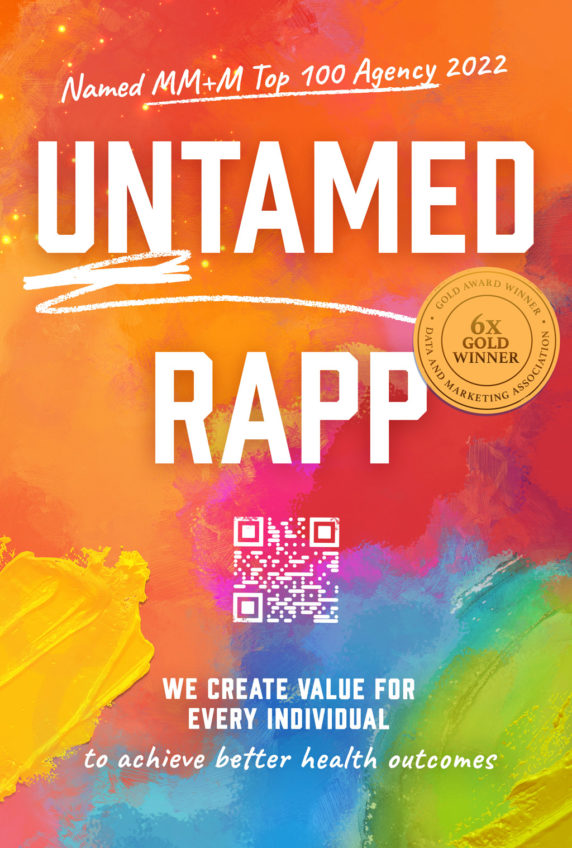For some people, evidence is everything. And for Angela Campbell, Rapp’s newly hired creative director, the year’s best proof point landed in her inbox in the early spring. It was an analysis of work her team had just done for Taltz, an Eli Lilly brand that treats moderate to severe plaque psoriasis.
“There’s often a little doubt in the back of your mind,” she says. “You think, ‘Is this really having any impact on patients?’”
But Rapp’s work on behalf of the drug, which included site optimization, had paid off. “People weren’t just going to the site, they were going to the ‘find a doctor’ section and we had improved it significantly. And that’s why I joined Rapp. I want to do work that I’m certain impacts the patient.”
Shari Reichenberg, managing director of Rapp New York, believes such commitment to patient-level impact perfectly encapsulates the agency’s vision. The firm aims to differentiate itself as “fiercely individual,” she notes.
“We fight for and acknowledge the differences of every individual, both in terms of our client’s customers and our own people.”

That helps patients “because we speak up against broad generalizations. We’re allergic to these awful stereotypical personas or hunches that aren’t based on data or insights,” she adds.
Of course, this demands constant refocusing of the healthcare lens.
“It’s more than just people who are sick and more than the need to go to the doctor,” explains Erica Kraus, SVP and head of health strategy. “Health is a journey that we are all on every day of our lives. So for Rapp, that individuality means every person can stand on their own.”
North American chief creative officer Moa Netto agrees, adding, “We are not the traditional storytelling agency, but we are not the purely performance- and numbers-driven agency. We believe that there’s something in the middle.”
MM+M estimates Rapp’s healthcare revenue increased 12% in 2021, to $57 million from $51 million in 2020. Reichenberg says that growth exceeded the company’s expectations and includes new business from, among others, Premera Blue Cross and Ascension Health Systems.
The latter addition prompted the agency to create a closed-platform type of research product (“which feels like Instagram to its users,” Kraus says) as well as detailed ethnographies. It’s working with Barefoot Proximity, another Omnicom shop, on the assignment.
And now that parent network Omnicom has landed the Royal Philips account, Rapp has become the CRM AOR for the company’s expansive consumer business, which includes infant care products. As Philips looks to move toward a DTC model, Rapp has been charged with “leading the way in combining data, technology and e-commerce,” Reichenberg says.
Rapp grew its healthcare practice to an MM+M-estimated 245 people by the end of 2021, up from 220 the year prior. Besides Campbell, who arrived from Concentric Health Experience, Rapp added creative director Yueh Fang Wu Feng, from Imre; VP, group account director Lee Abbas, from Traackr; and SVP, marketing sciences Chris Albert, from MRM.
. . .
Work from outside pharma you admire…
Tennis Australia found a unique way to let blind people experience tennis matches. It collected already available data about how and where balls are hit — how fast, whether the shot was a forehand or a backhand, etc. — then it used that data to create a “soundzine.” It’s a simple, smart use of data that’s quite powerful, and it makes tennis more accessible and inclusive. — Netto
From the June 01, 2022 Issue of MM+M - Medical Marketing and Media







